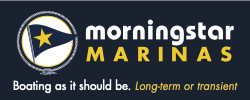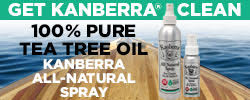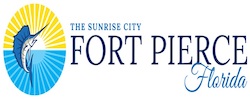Important – Florida Boat Registration Questions Answered
Claiborne:
Captain Tom Shipp of the Florida FWC has replied to my question about what reciprocity there is for a CG documented vessel from out of state that does not also have a state registration. As you know, quite a few states do not require CG documented vessels to also be registered with the state. Off hand, I believe this is the case in Maine, Massachusetts, North Carolina, and South Carolina.
In short, the answer is that every boat entering Florida waters must have a state registration even if it is CG documented. Parts of his message follow:
You are correct that the `grace period’ would not apply to those vessels. Although those other states may not require registration for documented vessels I would encourage each vessel owner to inquire of their individual home state if they could voluntarily register their vessel.
A vessel, federally documented or not, that is not covered by a registration from another state or by the USCG in a state without a federally approved numbering system, is not provided that 90 day reciprocity time and would need to register with DHSMV.
Captain Tom Shipp
FWC / DLE / Boating and Waterways
620 South Meridian Street
Tallahassee, FL 32399-1600
Phone: (850) 617-9563
Fax: (850) 488-9284
e-mail: thomas.shipp@myfwc.com
—
John J. Kettlewell
The idea that Maine would register my boat for me in the absence of a state system just so I could take it into Florida legally would be the best laugh of the week if it did not highlight the pathetic situation in Florida.
The lack of any common sense or hint of practical thinking on the part of boating policy makers in the state on nearly every issue affecting cruisers is beyond imagination. It makes me think there must be something in the water down there.
In the highly unlikely event that I ever take my boat into Florida again, I will be sure I have enough drinking water to last until I leave. I wouldn’t want to risk ending up so stupid.
Roger Long
Well isn’t this just great! I would like to see the law that this is based upon and the Florida FWC’s written interpretation of that law. I can’t imagine that this doesn’t interfere with another state’s right or the US government’s right to regulate commerce. Any Constitutional lawyers out there who would like to weigh-in on this subject?
Gregory Ward
In California they do not even have a form (and they have forms for everything) for registering a federal documented boat. We are planning on doing the loop in 2014 and this is something that I need resolved or at least a path to keep me legal.
Dave Dove
http://www.flhsmv.gov/dmv/FFFVO.pdf
These are the current fees from the Florida DMV for boat registration if you stay beyond the 90 day `free’ period or have no state registration from another state:
Registration fees vary by the length of the vessel, as follows:
Class A-1 (vessels less than 12′ and all motorized canoes): $12.25Class
A-2 (12 feet to 15 feet): $23
Class 1 (16 feet to 25 feet): $35.50
Class 2 (26 feet to 39 feet): $85
Class 3 (40 feet to 64 feet): $134.50
Class 4 (65 feet to 109 feet): $159.50
Class 5 (110 feet or longer): $196.50
Please note that some counties may tack on additional fees.
Al
Some states, other than Florida, allow you to state register your boat even if it is documented’“in fact, some states, like Rhode Island, require it. It might be worth it for someone cruising to survey states on their route and determine which one might be easiest and cheapest to register in, but watch out for becoming liable for local property and excise taxes! Just for kicks, I looked up vessel registration information for North Carolina. If your boat is C.G. documented you can’t title it, and if you can’t title it you can’t register it with the state.
John Kettlewell
Well I will just keep my boat out of Fla. They don’t need the money I would have spent there this summer. I will stop short and spend the money in GA.
Capt. Bill Shearon
If I register in FL because I CAN’T in NC, do I have to pay sales tax to FL because NC did not charge any for used boat?
DK Leisure
This is another example of our elected officals at there best. What in the world are they thinking? Anchoring issues, no wake zones, manatee zones, long waits for bridges, high marina costs and now this.
We have taken our boat to FL for the last five winters. With the price of fuel, marinas and the extra maintenance it is not an inexpensive trip. For what it costs for a round trip between NC and Fl we can fly or drive and stay in a motel for less.
On the other hand, we have heat on the boat and can cruise from VA to GA in the colder months. During this time of year, the waters are not crowded, there are less crab trabs and marinas are cheap. Aside from the temperature, whats not to like?
The more I think about it, the more reasons that I can find to skip FL. I believe that our boat has seen its last trip to FL.
David Boxmeyer
One item of consideration’¦.if the boat entering the state of Florida is 30 years old or older, and meets the requirements, that boat may be eligible for registration as an `antique vessel’’¦. the registration fees are so low that you would pay for two years’¦just for the fun of it. Otherwise, look into the sojourners permit’¦.which is less expensive.
Rob Hobman
This is a stubid law, If every state on the east coast required this, traveling from maine to florida would require registering in 14 states. lets get real.
Ray
This is confusing. I went to the http://www.dmv.org/fl-florida/boat-registration.php web site and exemptions are shown below:
`Exemptions
U.S. government-owned vessels.
Vessels used strictly as lifeboats.
Non-resident boats used on Florida’s waterways for 90 days or less.’
It makes no mention of an out-of-state registration requirement. This appears to be different from the information provided by Capt. Tom Shipp.
Richard Massey
To add fuel to the fire, I paid $23 for the tax collectors legal advise via their web page.
Sent: Wednesday, January 23, 2013 12:52 PM
To: Customer Support Internet E-Mail
Cc: WebMail
Subject: WEB: Property Taxes
I have a federal documented boat and California do not issue registrations for federal boats. I am going to be moving thru Florida waters for less than 90 days. Florida requires that all boats be registered Any idea of how to proceed to insure that I am in compliance with Florida law
Dear Mr. Dove,
Since you will be in Florida waters for less than 90 days, you are not required to obtain a Florida registration.
Sincerely,
Karen Taylor
Customer Support Department
Gentlemen, some of you are complaining about NOTHING!!
If you bring your boat to Florida’¦and are in FL waters for less than 90 days’¦then you do nothing. You are home free! In fact if you are constantly on the move’¦I doubt anyone would bother you.
The State of Florida is sensitive about boat registrations because `there is absolutely no property tax on boats, just as there is no income tax’ in FL. But if you are here for over 90 days’¦by state law you are required to register the vessel’¦or you can get a `sojourners permit’’¦.. http://www.leetc.com/vehiclevessel.asp?page_id=vesselsojourner
If you think Florida is bad’¦stay in GA or SC too long’¦and see what kind of tax bill you get from the state.
I hate to say it’¦but for people who own pricey boats, y’all complain a lot about nothing’¦.
Rob Homan
Cruising News:
I have a documented boat with a tax paid NY home port, I keep the boat in Maryland and are required to register the boat in MD With their DNC for a nominal fee. This registration does not issue the “bow numbers” but a 2 yr decal. Will this paid state registration make FL happy?
Bruce Stewart
Bruce Stewart, yes you are covered by that registration decal for up to 90 days in Florida.
John Kettlewell
There’s a jumble of misinformation in the last few comments. First the dmv.org website is not an official Florida site. Reread what Captain Shipp of Florida’s FWC, the agency that enforces these laws, wrote: `A vessel, federally documented or not, that is not covered by a registration from another state or by the USCG in a state without a federally approved numbering system, is not provided that 90 day reciprocity time and would need to register with DHSMV.’
I have no idea what tax collector gave you the wrong advice, but the information is incorrect.
Documented vessels need to also be state registered in Florida. There is no 90-day grace period unless your boat is state registered some place.
John Kettlewell
A note on Florida’s exemption for documented vessels from a state without an approved numbering system ‘“ there are none! According to the USCG’s website, every state has an approved numbering system, so don’t bother trying to research if your state doesn’t have an approved numbering system. See Federal Register/Vol 77, No. 60/Wednesday, March 28, 2012/Rules and Regulations 18689, `Changes to Standard Numbering System, Vessel Identification System, and Boating Accident Report Database ‘“ IV. Background’.
Also, be aware that to qualify for Florida’s `antique vessel’ status your boat must have an engine which is of the same manufacture and model as the original engine. This disqualifies many 30 year and older boats!
Gregory Ward
So, let me get this straight? Under this interpretation, wouldn’t every single commercial vessel that is documented under federal law (and not registered in a state) also have to comply with this supposed regulation?
I’m betting that FWC is not boarding and writing up cruise ships, and tankers, that are porting in Florida to drop off or take on passengers that do not have their state registration.
I’d like to see a FL Attorney General’s opinion on this. I’ve seen too many non-lawyers put out really bad information to be convinced this is the law just based on one person who works for FWC’s opinion.
R. Holiman
I disagree with the statement `The easiest thing to do is to register your boat in Florida. No THE EASIEST THING TO DO IS TAKE A LEFT AT ST MARYS INLET. DO NOT GO INTO FLORIDA WATERS AND DO NOT BUY ANYTHING FROM FLORIDA. WHEN THEIR MARINE INDUSTRY STARTS TO FEEL THE HEAT, THEY MIGHT VOICE THEIR CONCERNS.
Bob Carter






















Be the first to comment!